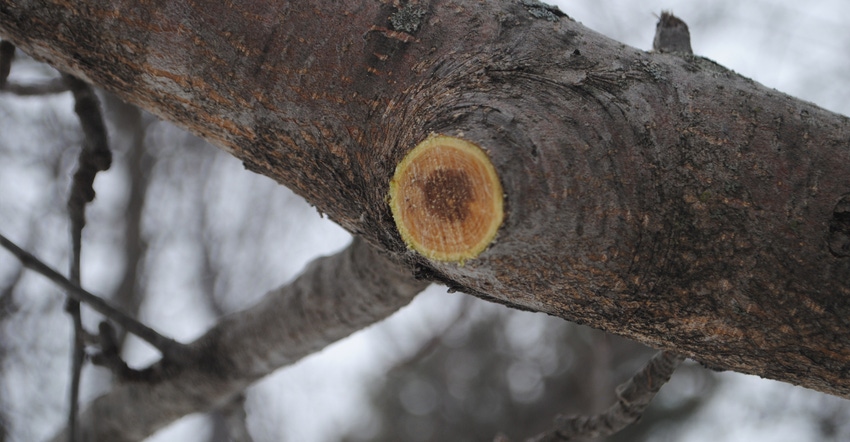
When we talk about cutting wood, most landowners think immediately about chain saws. But there are literally hundreds of larger hand tools that are quite useful in cutting volunteer trees and trimming branches and brush around the farmstead.
You can often place these in the back of your truck or side-by-side when you go into the woods or out to the pasture, without having to crank up the chain saw every time.
Retired Nebraska Forest Service district forester Steve Rasmussen of Plainview, Neb., offers his list of larger hand tools that he uses regularly around his farm and woodlands:
Handsaw. Rasmussen suggests that a small hand saw can be one of the most lightweight and convenient tools to have when working around timber. This little saw has a curved blade that, when you pull on the saw, cuts itself into the wood. “This cutting takes less effort and puts less strain on your wrist,” Rasmussen says. “You would use this to cut midsized trees and branches, so not for a baby tree, but not a full-grown tree either.”
The more teeth on these saws, the finer the cut. Rasmussen uses a saw with seven teeth per inch of blade, and it can cut diameters of 2 to 2.5 inches. He even uses it to cut down pine and spruce trees on his Christmas tree farm.
Bow saw. The old bow saw is the standard handsaw for woodland owners. It is what many Christmas tree farmers used before they found the handsaw or lighter chain saws. It has fewer teeth per inch, so it takes a bigger cut and can handle larger trees and branches. “But you have to put down pressure on this saw, and you cut on the back stroke, not the forward stroke,” Rasmussen says. “It can cut timber at 2-3 inches in diameter.”
There are also larger bow saws that have interchangeable blades, just like their smaller counterparts, and are designed for even larger trees.
“Larger bow saws have fewer teeth per inch on the blade,” Rasmussen says. “Mine has four teeth per inch.” You can’t cut smaller branches with this type of saw because the blade would bind in the wood. However, it still works well with small trees.
Loppers. Large hand loppers can cut branches up to 2 inches in diameter at the most. “You don’t want to take too large of a branch,” Rasmussen explains. “There are loppers that have a rachet, so they give you more leverage for larger branches.”
He says that there are two kinds of lopper blade designs, including a scissors-style bypass design and an anvil style. “The longer your arms are, the more leverage you have in cutting,” Rasmussen adds.
Brush hook. One of the more uncommon hand tools that Rasmussen employs is a brush hook that is perfect for chopping volunteer mulberry and Siberian elms trees. “It has a hooked blade that is sharp all the way down, so you can reach into areas to chop trees and branches,” he says. “Take great care when using this tool, but it works well in specific situations.”
With all of these large hand tools, Rasmussen encourages woodland owners to take safety precautions and don safety gear — including good leather gloves for hand protection, eye gear to protect the eyes from branches and debris, and a hard hat and ear protection if the operator is using any kind of larger power equipment.
While power tools are perfect for large cutting and clearing jobs, a larger hand tree tool is often the quick and convenient ticket to getting those small cutting projects completed with ease.
About the Author(s)
You May Also Like






